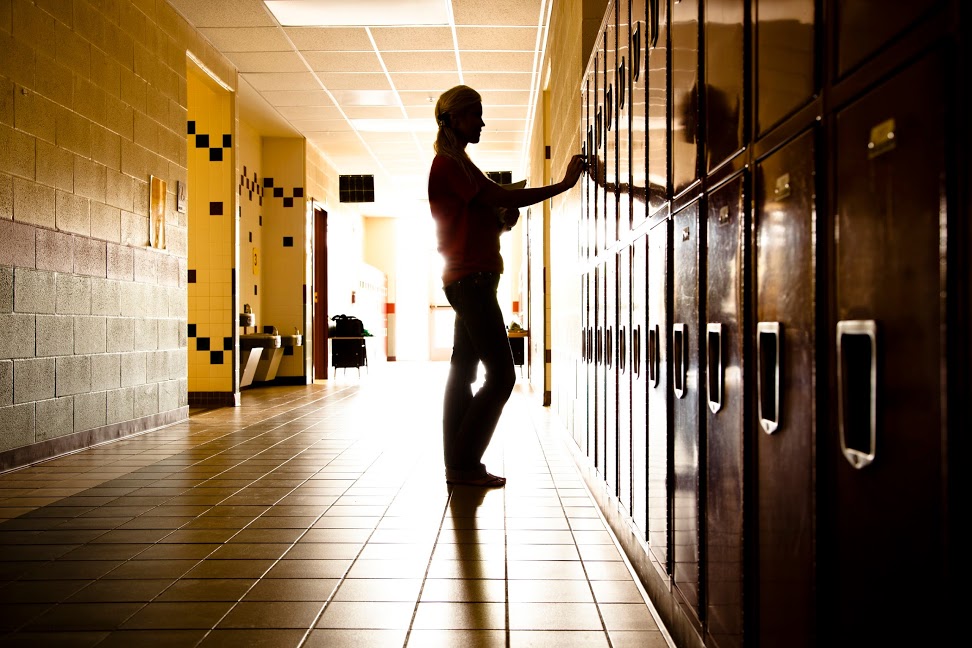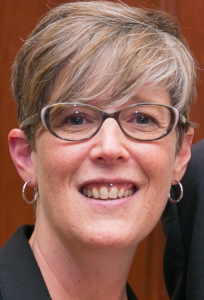
Black teachers: How to recruit them and make them stay

Lessons in higher education: What California can learn

Keeping California public university options open

Superintendents: Well-paid and walking away

The debt to degree connection

College in prison: How earning a degree can lead to a new life


Credit: Kathy Moore
Kathy Moore, California Partnership to End Domestic Violence
Young people experiencing dating abuse often live in a world of isolation, self-doubt and fear that affects every aspect of their lives, including school. Jessica, a survivor of teen dating abuse, has a story that is all too common.
When Jessica was a sophomore at Fairfield High School, she began dating a fellow student. She believed that the intensity of his feelings for her caused his initial jealousy. But that soon transformed into a pattern of overbearing control. He declared that no one else existed besides the two of them. He forbade her from talking to girlfriends and young men. He dictated that she not wear makeup or skirts.
Beginning to feel her independence diminishing, Jessica became depressed and agonized over how to end a relationship with someone who said he would commit suicide if she broke up with him. Not surprisingly, her classroom participation declined. In a class she and her boyfriend shared, she fell silent and stopped participating in a group project when he stared at her with threatening disapproval at the prospect of her interacting with other boys in the group. She felt humiliated and defeated.

Credit: Peace Over Violence
Patti Giggans, Peace Over Violence
One in four youth in the United States struggles through some form of dating abuse. Nearly half of students who have experienced dating abuse report that at least part of the abuse occurred at school. It’s not unusual for a student’s academic performance to suffer as a result, as it did in Jessica’s case.
How can we expect young people to learn, excel academically and grow into healthy adults in unsafe school environments? How can we adults support the development of healthy teen relationships and the skills they need to get there?
Preventing adolescent dating abuse in and around schools is essential. It can be done with in-classroom education and school policies that teach teens about healthy relationship skills and give school staff the tools they need to foster those behaviors. These school plans should include elements that are known to increase positive outcomes for teens, including youth development programs that go beyond relationship education to engaging adults in their communities in violence prevention strategies. Supported by their schools and the adults around them, empowered teens can lead healthy relationship discussions in their schools, creating a real cultural shift among their peers.
Our work with schools in the Los Angeles Unified School District is just one example of what can happen when educators work in partnership with advocates, students and parents to make healthy relationship activities a priority. One key to success has been classroom education using a violence prevention curriculum that teaches students how to identify characteristics of unsafe relationships and how to build healthy ones. We have seen how this knowledge has empowered students to become leaders and peer advocates at their schools, to form clubs and join the groundswell of statewide leaders advocating for prevention policies.
Sharlotte joined our Peace Over Violence STOP Club in 2009 after an abusive relationship. Initially joining the club to build her leadership abilities, she learned to process her experience and build skills that led her to want to share her story and inspire other youth to ask for help. Today Sharlotte is one of POV’s strongest youth advocates and serves as part of their theater-based violence prevention and youth outreach troupe in South Los Angeles. This project is aimed at using youths’ personal experiences to engage adults in the community, particularly men, to become allies in the movement to prevent dating violence.
What will it take to expand this movement in California and prevent other teens from experiencing dating abuse like Jessica and Sharlotte did? It will take immediate action from school boards and education leaders in communities throughout the state. The passage of California’s new Healthy Youth Act (AB 329) provides a timely opportunity, as it requires middle and high schools to include healthy relationship education as part of sex education. This should be just one part of a comprehensive campus plan to prevent and respond to adolescent dating abuse. It will require:
There are local domestic violence organizations in every community able to assist their local schools with tailored curricula and policies. In addition, a joint publication of the California School Boards Association and the California Partnership to End Domestic Violence offers guidelines for school boards on designing policies to prevent dating abuse.
Our children deserve a safe school environment as a prerequisite for academic success and healthy relationships. Prioritizing healthy relationships now will help create a future this generation deserves. California can take the lead in preventing adolescent dating abuse if educators work with advocates to make this happen.
•••
Kathy Moore is Executive Director of the California Partnership to End Domestic Violence. Patti Giggans is Executive Director of Peace Over Violence.
The opinions expressed in this commentary represent those of the authors. EdSource welcomes commentaries representing diverse points of view. If you would like to submit a commentary, please review our guidelines and contact us.

Panelists discussed dual admission as a solution for easing the longstanding challenges in California’s transfer system.

A grassroots campaign recalled two members of the Orange Unified School District in an election that cost more than half a million dollars.

Legislation that would remove one of the last tests teachers are required to take to earn a credential in California passed the Senate Education Committee.

Part-time instructors, many who work for decades off the tenure track and at a lower pay rate, have been called “apprentices to nowhere.”
Comments (3)
Comments Policy
We welcome your comments. All comments are moderated for civility, relevance and other considerations. Click here for EdSource's Comments Policy.
Meenakshi 7 years ago7 years ago
Thanks for this wonderful information. It’s very helpful for me.
Drew Crecente 7 years ago7 years ago
We agree completely with the role that schools play in preventing teen dating violence! Unfortunately funding is always tight and this is one of those issues that is often unfunded (which is why we produce free resources for educators). Our nonprofit organization, Jennifer Ann's Group, has been focused on the prevention of dating abuse for over 10 years; since 2008 we've been producing video games designed specifically to help students, teachers, and parents recognize and … Read More
We agree completely with the role that schools play in preventing teen dating violence! Unfortunately funding is always tight and this is one of those issues that is often unfunded (which is why we produce free resources for educators).
Our nonprofit organization, Jennifer Ann’s Group, has been focused on the prevention of dating abuse for over 10 years; since 2008 we’ve been producing video games designed specifically to help students, teachers, and parents recognize and avoid dating abuse. All of our games are completely free and we encourage educators to use these free resources in their classrooms.
Feel free to contact me with any questions – we believe strongly in the ability of this evidence-based solution to enage and empower young people and will be happy to assist you.
I began Jennifer Ann’s Group in 2006 in honor of my daughter – a high school senior murdered by her ex-boyfriend. Our goal is to prevent other parents – friends – classmates from experiencing this same devastating loss.
Drew Crecente, JD
Founder of Jennifer Ann’s Group
Replies
Floyd Thursby 7 years ago7 years ago
Focus on test scores. Schools can’t micromanage everything. The biggest reason for poverty is kids are in single parent households and not focused on education. We are not building strong men. Education is key. Kids with one parent are twice as likely to go to prison or end up homeless and half as likely to go to college. 60% of top colleges are women.